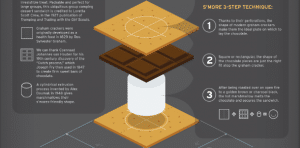Building awareness consists of many blocks. If you’re a former (or current) LEGO architect, think of those blocks as pieces to a city (that won’t cause shriek-inducing pain when stepped upon). Your brand is that city—a bustling metropolis of content and customers that must be constructed with care.
As you construct, are you asking the right questions? What content do we have, is there value in its current state, what can be built, and what steps do we need to take to create them? Is our messaging memorable? Can our dialogue stand out amongst the rest?
Interactive content is the answer. In the LEGO world, it’s the connecting piece that bridges one piece with another, connecting one city with another. In the content world, it’s one of the most valuable building blocks of creating awareness (and success).
Awareness: Some Assembly Required
In a top-interactive-content-funnel awareness phase, some “assembly” is still required. The customer is still forming their opinion of your brand or product, and the content they are presented with in this stage can have a major effect on what happens next.
Our 2018 research study with Demand Metric found interactive content more likely to be effective at educating buyers and differentiating from the competition, and more likely to be shared frequently. All of these points pair well with awareness, or the idea of distinguishing valuable, engaging content from its passive counterparts.
Interactive content helps you start a dialogue in the awareness phase that passive content cannot. In a how-to webinar series we kicked off this week, we looked at the benefits of using interactive content to drive awareness, but for now, let’s take a moment to map out what you’re hoping to achieve in this particular phase of the funnel.
Content and Your Brand: Block by Block
In order to build your strategy for the awareness phase, you’ll need to gather some pieces. To start, ask yourself the following questions:
1. How can we best represent our brand through the content we create?
Take the LEGO brand, for example. This household name has continued to create impactful conversations with buyers through their imaginative and vibrant messaging that appeals to all ages. Understand your brand, your audience, your existing content strategy, and what has or hasn’t worked in the past.
Do you know who your current or target audience is? Do you have data to support your assumptions other than survey results?
For your brand, what do you want achieve with your content, or learn about your audience? Can that be achieved with your current content?
Once you have the answers to these, you can begin building.
2. How can we encourage prospects to continue the dialogue that we begin?
Meaningful awareness builds a path to content engagement. When a prospective customer is engaged with a brand, we inspire them to continue the conversation, to do more research, and to become more familiar with what we have to offer.
By extending the use of content that takes prospects or customers deeper into consideration or discovery, the dialogue continues into a more meaningful conversation fueled by data.
3. What can our brand offer in the awareness stage?
First impressions are important—particularly when a purchase-making decision stands on the other side. In the awareness stage your brand has the power to shape opinions, so it’s best to invest in the experiences you have to offer. Dynamic content creates dynamic conversation, and awareness is the first and most valuable opportunity we have to enhance a potential customer’s experience with our brand.
An Introduction to Interactive Content
Ready to learn which types of interactive content excel in creating better awareness? Check out our video!








